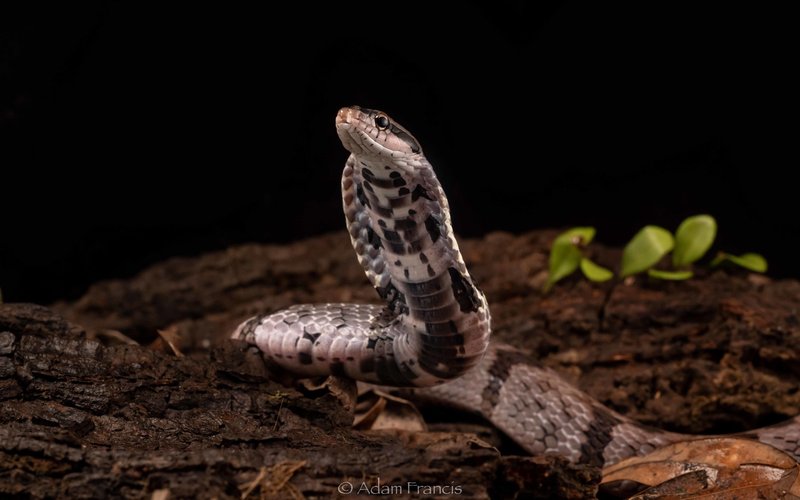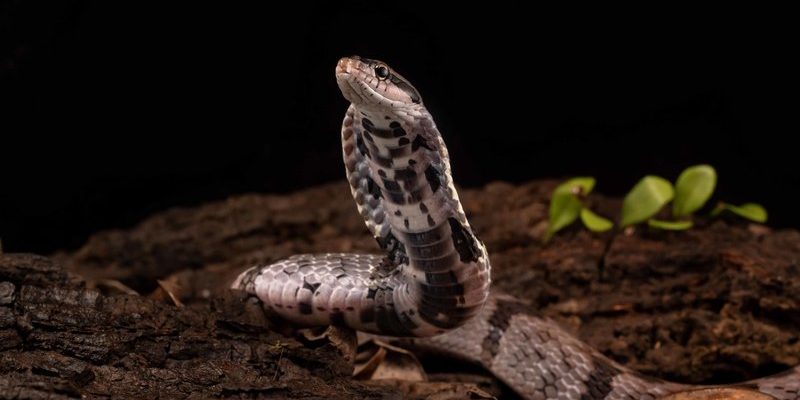
The term “False Cobra” might spark curiosity, especially if you’ve heard about the more famous snakes of the cobra family. But here’s the thing: the False Cobra isn’t actually a cobra at all! It belongs to the Psammophis genus and is renowned for its impressive mimicry. Imagine someone wearing a really convincing costume that tricks others — that’s exactly what this snake does in the wild. It may look like a cobra, but it comes with its own unique traits and behaviors.
These snakes are mostly found in Africa, primarily in areas like savannas and grasslands. They thrive in these open spaces, where they can easily hunt for food and avoid larger predators. With their slender bodies and striking colors, they add to the diversity of the ecosystems they inhabit. You might be wondering why they’ve developed such camouflage. Well, mimicking a cobra helps them deter potential threats. After all, many animals think twice before approaching a snake that resembles one of nature’s most feared creatures!
Physical Characteristics of False Cobras
False Cobras are slender snakes, typically ranging between 3 to 6 feet in length. Though they are not as thick-set as true cobras, their elongated bodies allow for quick movements. Their coloration varies from shades of olive green to brown, often adorned with darker markings, providing them with excellent camouflage among the grass and foliage.
One of the most fascinating features of the False Cobra is its ability to flatten its neck and raise its head, imitating the defensive posture of a cobra. This behavior not only enhances their mimicry but also serves as a warning to potential threats. It’s like when a dog puffs up its fur to appear bigger than it is. By adopting such a posture, they can create the illusion of being more dangerous than they truly are.
Additionally, the False Cobra has large, prominent eyes that aid in hunting. These eyes grant them excellent vision, especially in low-light conditions. Coupled with their agile body and speed, they become efficient hunters, capable of striking at their prey with precision. Overall, their physical attributes are perfectly designed for survival in their natural habitats.
Habitat and Distribution
The False Cobra is primarily found in sub-Saharan Africa, thriving in diverse habitats such as savannas, open woodlands, and grasslands. You might picture an expanse of tall grass swaying gently in the African breeze—this is often where you’d find them. These environments provide ample cover for the False Cobra to blend in while hunting small animals.
For the False Cobra, adaptability is key. While many snakes prefer specific microhabitats, they are versatile enough to thrive in various terrains. They can often be seen basking on rocks or in the sun during the day, absorbing warmth to regulate their body temperature. This behavioral adaptation helps them maintain the energy needed for hunting during cooler periods.
In terms of distribution, these snakes are widespread across regions like West Africa and parts of East Africa. However, their population can vary depending on habitat loss due to human activities. As we continue to encroach on their natural surroundings, it’s crucial to understand the importance of these ecosystems and the creatures that inhabit them.
Diet and Hunting Behavior
False Cobras are primarily carnivorous, feeding on a diet consisting mainly of small rodents, lizards, and occasionally other snakes. Their keen sense of vision and quick reflexes make them formidable predators. When they spot potential prey, they often employ stealth, slowly moving closer until they are within striking distance. It’s fascinating to think of them as skilled hunters, silently navigating the tall grass.
Once they are close enough, False Cobras strike with incredible speed. They use their sharp teeth to inject venom into their prey, which quickly immobilizes it. However, unlike true cobras, the venom of False Cobras is less potent, primarily subduing their smaller prey rather than causing significant harm. This trait reflects their evolutionary adaptations; they’ve found a niche that allows them to thrive without competing directly with their more dangerous cousins.
After capturing their meal, False Cobras will typically consume it whole. Their flexible jaws allow them to stretch and swallow prey much larger than their head. This ability is common among snakes, but it’s still remarkable to observe in action. Watching a snake consume its meal is a reminder of the complexity and beauty of nature’s food chain!
Behavior and Defense Mechanisms
False Cobras exhibit fascinating behaviors that help them navigate their environments effectively. They are primarily diurnal, meaning they are active during the day. This behavior aligns with their hunting habits and allows them to maximize their foraging opportunities. However, they can also be seen basking in the sun to regulate their body temperature. Just like you might enjoy a sunny day at the park, these snakes bask in the warmth to energize themselves.
When threatened, False Cobras exhibit some impressive defensive tactics. As mentioned earlier, they can flatten their necks and raise their heads to mimic a cobra’s iconic stance. They may also hiss loudly, creating a startling sound that can deter potential predators. It’s not uncommon for them to retreat into nearby vegetation or burrows when feeling threatened, effectively using their camouflage to go undetected.
While False Cobras look fierce, they are generally shy and prefer to avoid confrontation. If cornered, however, they can bite, and their venom can cause discomfort to humans—though it is rarely dangerous. This balance between being cautious yet capable of defending themselves is a significant survival strategy in their natural habitat, making them intriguing creatures to study.
Conservation Status
As fascinating as False Cobras are, their conservation status is something worth paying attention to. Currently, the IUCN (International Union for Conservation of Nature) does not list them as endangered; their populations are considered stable in many areas. However, they face threats from habitat loss due to agriculture, urban development, and climate change. It’s like watching a beautiful painting slowly fade as time passes; we need to ensure these creatures thrive in their environments.
Conservation efforts are crucial. Protecting their habitats means more than just saving a snake; it’s about preserving entire ecosystems. When you think about ecosystems, it’s like a woven fabric—each thread represents a different species, and if we pull out too many threads, the whole fabric weakens.
Educating communities and promoting awareness about the importance of these reptiles can help. If more people understand the role of the False Cobra and its contribution to biodiversity, they may be motivated to support conservation efforts. After all, every creature, no matter how small, plays a part in the grand tapestry of life on Earth.
Interesting Facts About False Cobras
| Scientific Name: | Psammophis species |
| Length: | 3 to 6 feet |
| Habitat: | Sub-Saharan Africa, savannas, grasslands |
| Diet: | Small rodents, lizards, other snakes |
| Behavior: | Diurnal, skilled hunters, mimicry |
| Conservation Status: | Not endangered, stable population |
FAQ
Are False Cobras venomous?
Yes, False Cobras are venomous, but their venom is not particularly dangerous to humans. Their venom primarily affects small prey, helping them to immobilize it for easier consumption. That said, if bitten, humans may experience mild discomfort, swelling, or irritation, but serious complications are rare.
How do False Cobras differ from true cobras?
False Cobras belong to the Psammophis genus, while true cobras belong to the Naja genus. While they share similar appearances and behaviors—such as the ability to flatten their necks—false cobras do not possess the same level of venom potency. Additionally, their overall sizes and patterns can vary significantly.
What do False Cobras eat?
False Cobras primarily feed on small rodents, lizards, and occasionally other snakes. Their hunting methods include stealth and swift strikes, allowing them to capture prey efficiently. They are carnivorous and have adapted well to their environments to find food.
Where are False Cobras commonly found?
False Cobras are mostly found in sub-Saharan Africa, particularly in savannas and grasslands. They prefer open environments where they can blend into the surroundings, using their coloration to avoid detection by predators while hunting.
Can False Cobras be kept as pets?
Keeping a False Cobra as a pet is not advisable due to their specialized care requirements and potential for defensive behavior. They thrive in their natural habitats, and it’s best to appreciate their beauty in the wild instead of in captivity. If considering a pet snake, it’s better to choose a species that is more commonly kept and well-suited for domestication.
How long do False Cobras live?
In the wild, False Cobras generally live around 10 to 15 years, though this can vary depending on environmental factors and threats. In captivity, with proper care, some individuals are known to live longer, possibly reaching up to 20 years.
Do False Cobras have any natural predators?
Yes, despite their impressive mimicry, False Cobras can fall prey to larger birds of prey, mammals, and other snakes. Their primary defensive mechanism is to rely on camouflage and mimicry to deter potential attackers. By appearing dangerous, they reduce the chances of confronting actual predators.
How do False Cobras reproduce?
False Cobras are oviparous, meaning they lay eggs. The female typically finds a safe place to deposit her eggs, and after laying, she leaves them to incubate. Baby False Cobras emerge after a few weeks, and they are independent from birth, having to fend for themselves immediately.
Are False Cobras social animals?
No, False Cobras are generally solitary creatures. They prefer to live alone and come together only for mating. Their independence is reflected in their hunting and feeding behaviors, as they primarily rely on their skills and adaptations to survive.
What role do False Cobras play in their ecosystem?
False Cobras play a vital role in their ecosystems as both predators and prey. By controlling populations of small rodents and lizards, they help maintain balance within their habitats. Their presence also indicates a healthy ecosystem, showcasing the intricate relationships between various species.

